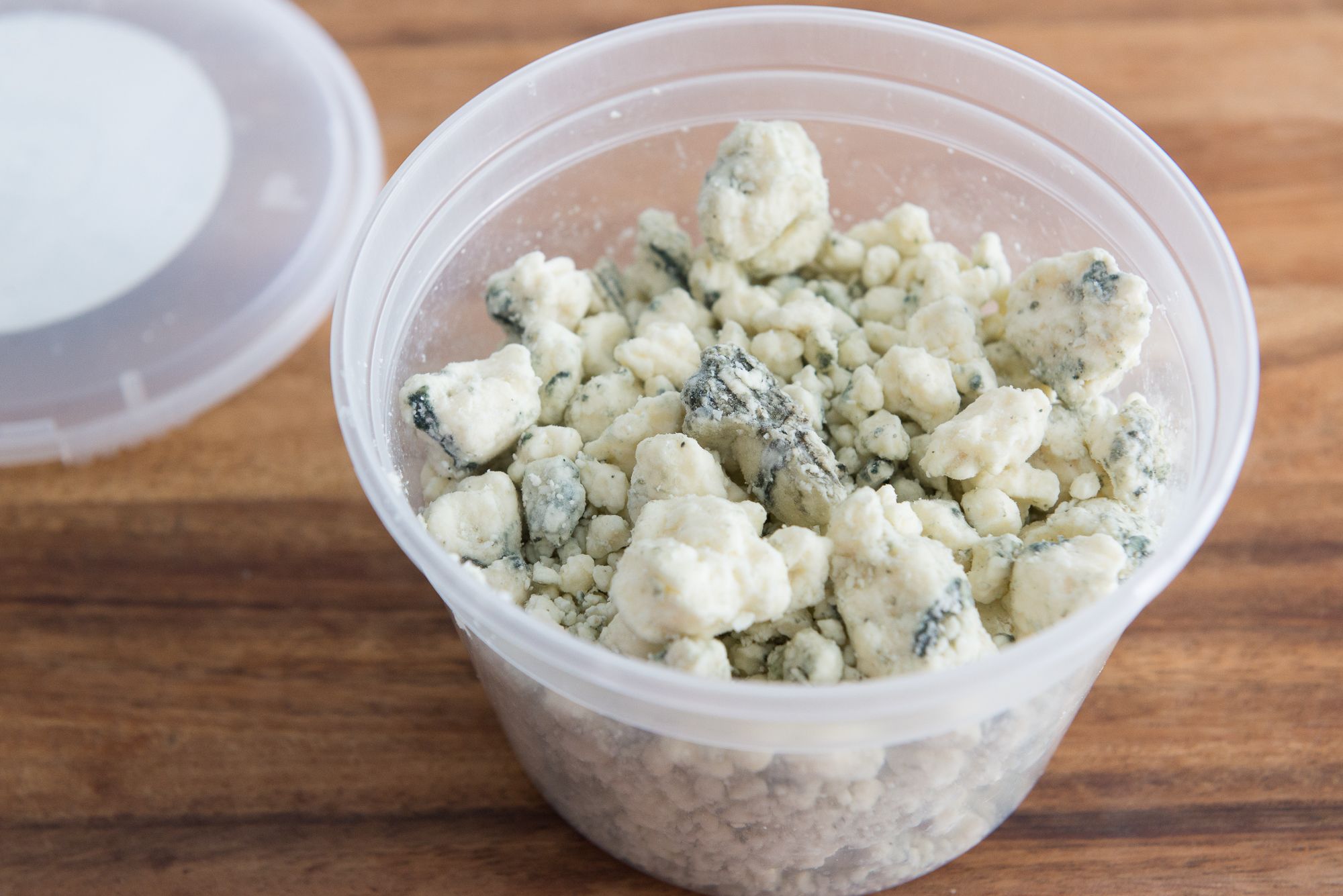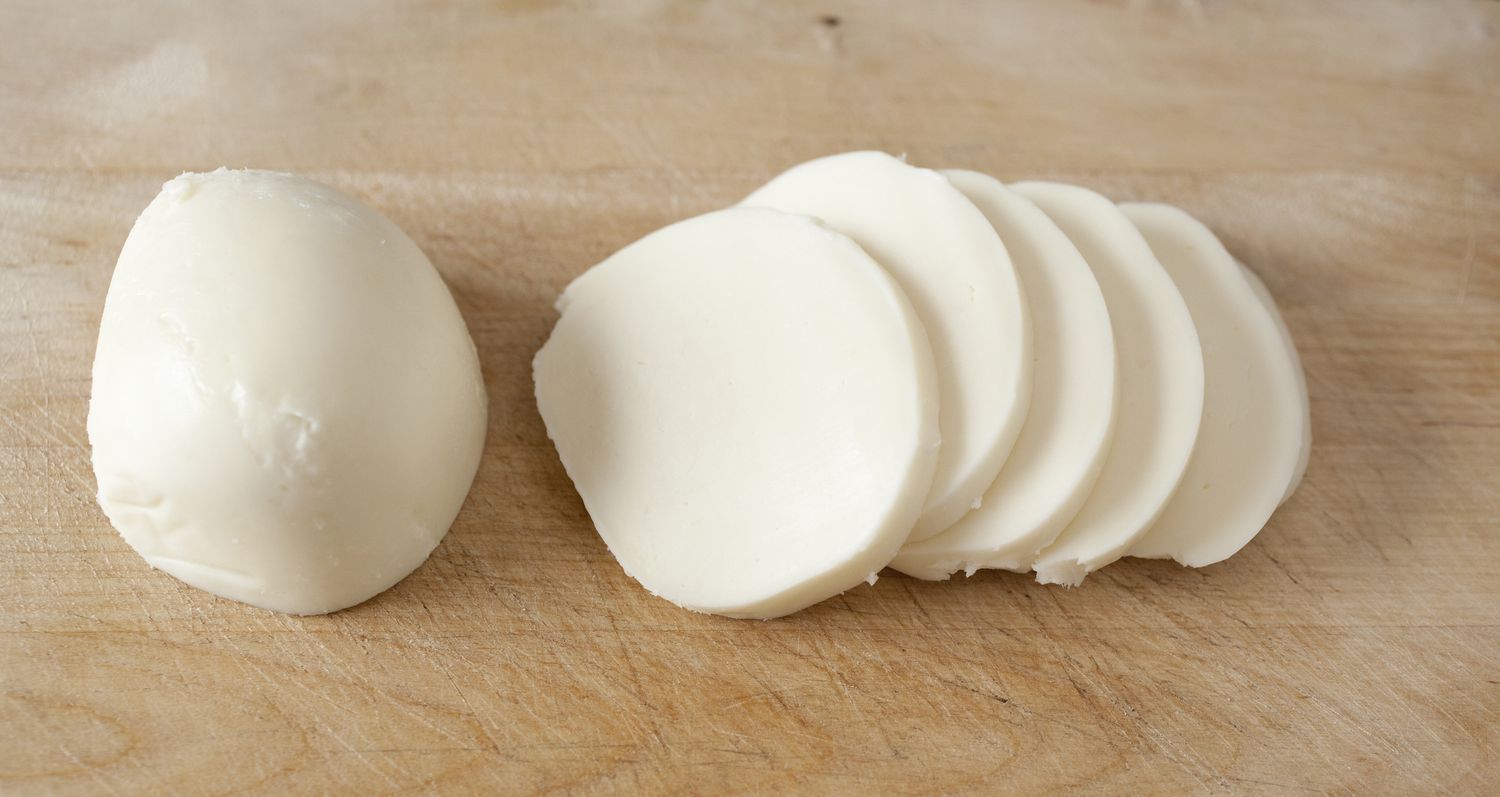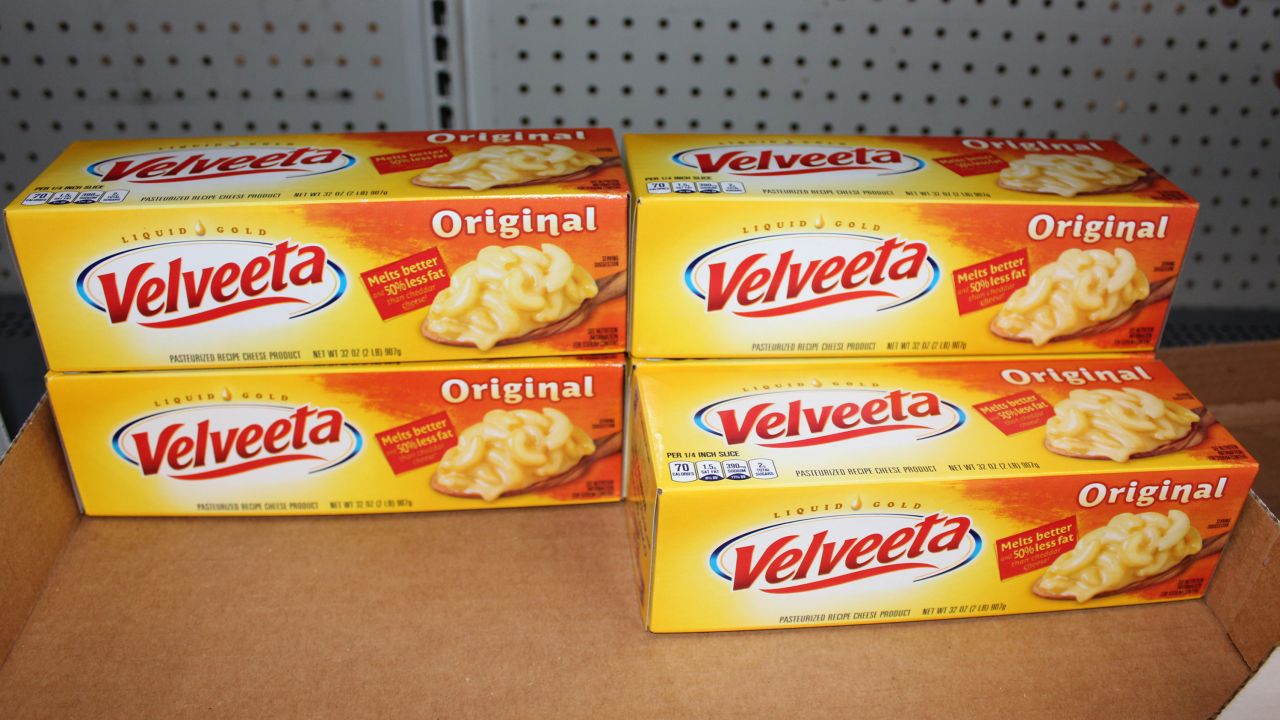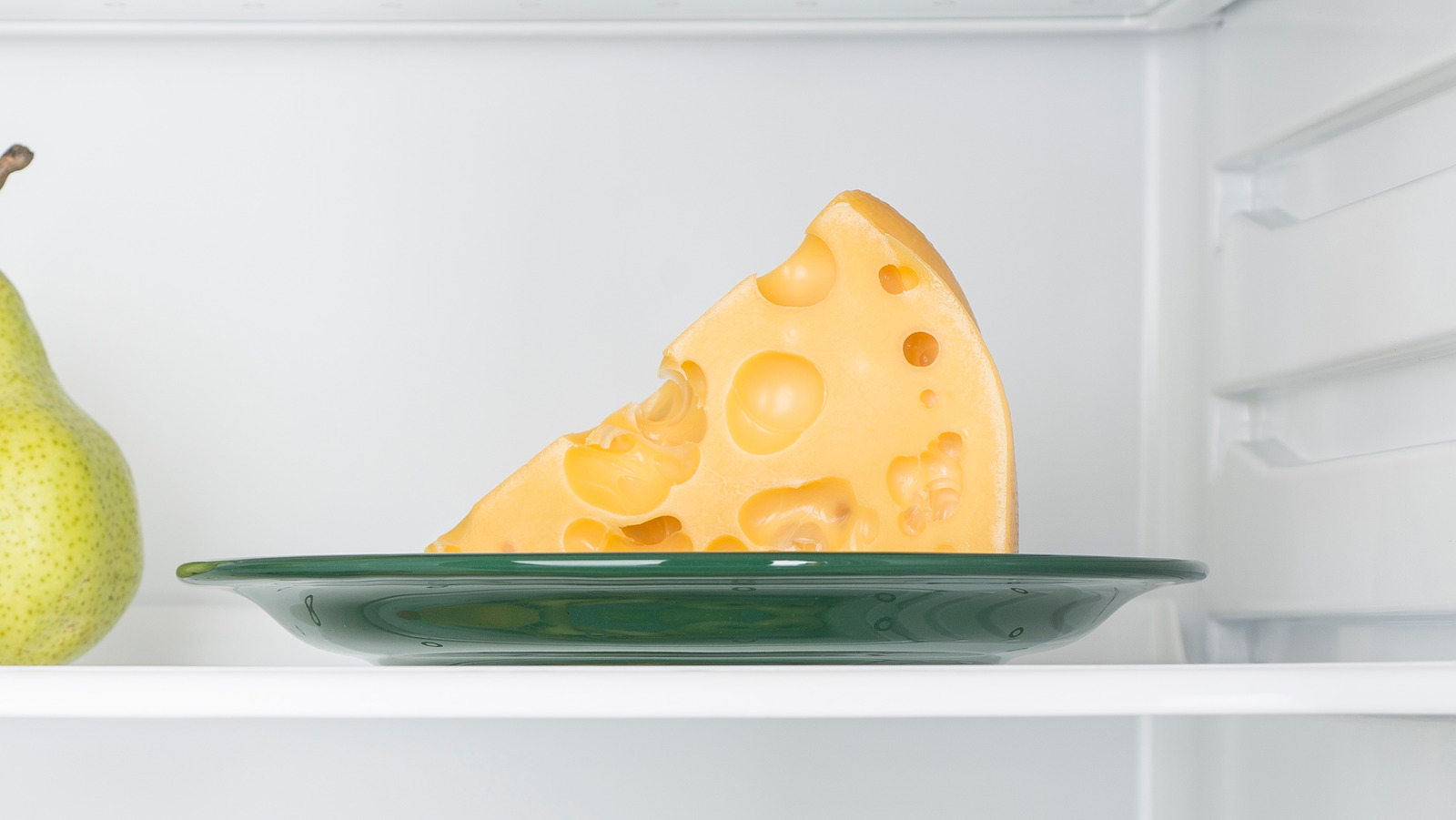

Articles
How To Store Blue Cheese
Modified: February 26, 2024
Looking for articles on how to store blue cheese? Discover expert tips and techniques to keep your blue cheese fresh and flavorful for longer periods.
(Many of the links in this article redirect to a specific reviewed product. Your purchase of these products through affiliate links helps to generate commission for Storables.com, at no extra cost. Learn more)
Introduction
Welcome to the wonderful world of blue cheese! Known for its distinct flavor and creamy texture, blue cheese is a beloved delicacy enjoyed by many around the world. Whether you’re a seasoned blue cheese connoisseur or just beginning to explore its flavors, proper storage is key to preserving the quality and taste of this delectable cheese.
In this article, we will guide you through the process of storing blue cheese effectively. From choosing the right storage container to managing humidity levels, we’ll cover all the necessary steps to keep your blue cheese fresh and flavorful for as long as possible.
So, if you’re ready to embark on a journey to become a pro at storing blue cheese, grab your favorite slice of bread or crackers and let’s dive in!
Key Takeaways:
- Properly storing blue cheese is crucial for maintaining its flavor and quality. From choosing the right container to managing temperature and humidity, following these steps will ensure your blue cheese stays fresh and delicious.
- Remember to handle blue cheese with care, monitor its shelf life, and avoid cross-contamination. By following proper storage techniques and trusting your senses, you can enjoy the unique flavors of blue cheese for an extended period.
Read more: How To Store Parmesan Cheese
Understanding Blue Cheese
Before we delve into the specifics of storing blue cheese, it’s essential to understand what makes this cheese unique. Blue cheese is a type of cheese that is typically made from cow’s milk, although other variations like goat’s milk and sheep’s milk can also be used.
What sets blue cheese apart is the presence of mold known as Penicillium. This mold gives the cheese its signature blue or green veins, along with its distinct flavor. Blue cheese can have a range of flavors, from mild and creamy to strong and tangy, depending on the variety.
Some popular types of blue cheese include Roquefort, Gorgonzola, and Stilton, each with its own characteristics and flavor profiles. Understanding the unique qualities of the specific blue cheese you have will help in determining the best storage practices.
It’s important to note that blue cheese is a perishable product, meaning it can spoil if not stored correctly. To ensure that your blue cheese maintains its quality and flavor, it’s crucial to follow proper storage techniques.
Choosing the Right Storage Container
When it comes to storing blue cheese, it’s important to choose the right storage container. The ideal container should provide a balance of airflow and moisture control while protecting the cheese from external odors and contaminants.
Opt for a container that is airtight or has a tight-sealing lid to prevent air from entering and causing the cheese to dry out. It’s best to avoid using plastic wrap or plastic bags as they can trap moisture and promote the growth of unwanted molds.
Instead, consider using cheese paper or wax paper to wrap your blue cheese. These materials allow the cheese to breathe, preventing excess moisture buildup while still protecting it from air exposure. Cheese paper is specifically designed to regulate moisture levels, making it an excellent choice for storing blue cheese.
If you don’t have access to cheese paper, you can also wrap your blue cheese in parchment paper followed by aluminum foil. The parchment paper helps absorb excess moisture, while the foil acts as a barrier against air and light.
Remember to label your storage container with the date of purchase or the date you opened the cheese. This will help you keep track of how long the cheese has been stored and when it may need to be consumed.
Additionally, it’s a good practice to dedicate a separate storage container for blue cheese to prevent cross-contamination with other foods. Blue cheese has a strong aroma that can permeate other items in the refrigerator, so keeping it in a designated container will help preserve the integrity of your other food items.
By choosing the right storage container, you can ensure that your blue cheese stays fresh and flavorful for an extended period.
Wrapping the Blue Cheese Properly
Properly wrapping blue cheese is crucial to maintaining its quality and preventing it from drying out or absorbing unwanted odors. Follow these steps to ensure your blue cheese stays fresh:
1. Start by removing any plastic wrap or packaging that came with the cheese. These materials can trap moisture and promote the growth of molds.
2. Take a piece of cheese paper or wax paper and place the blue cheese in the center. Make sure the paper is large enough to wrap the cheese fully.
3. Gently fold the paper over the cheese, covering it completely. Avoid using any adhesive or tape as it can damage the cheese and affect its flavor.
4. If using parchment paper and aluminum foil, wrap the cheese in the parchment paper first. Then, wrap it in aluminum foil, ensuring that it’s tightly sealed.
5. Label the wrapping with the date of purchase or the date you opened the cheese. This will help you keep track of its freshness.
6. If you have multiple blue cheese varieties, it’s advisable to wrap them separately to prevent flavor transfer.
Remember to handle the blue cheese gently while wrapping to avoid squishing or crumbling it. The goal is to create a breathable yet protective barrier that keeps the cheese fresh.
Once wrapped, store the blue cheese in an airtight container or a cheese storage bag. This further helps to maintain its moisture and prevents the cheese from absorbing any unwanted flavors from the refrigerator.
By wrapping your blue cheese properly, you can preserve its taste and texture, allowing you to enjoy it at its best.
Finding the Optimal Storage Temperature
The storage temperature plays a crucial role in preserving the quality and flavor of blue cheese. It’s essential to find the optimal temperature to ensure that the cheese stays fresh and doesn’t spoil.
Generally, blue cheese is best stored at a cool temperature. The ideal range is between 35°F (1.7°C) and 45°F (7.2°C). This temperature range helps slow down the growth of bacteria and molds that can cause the cheese to spoil.
If your refrigerator has a dedicated cheese drawer, it’s an excellent place to store blue cheese. The drawer is designed to maintain a slightly higher humidity level and a more consistent temperature, which is perfect for preserving the cheese’s texture and flavor.
If you don’t have a cheese drawer, you can store blue cheese in the warmer part of your refrigerator, usually in the back where the temperature is more stable. Avoid placing it near the door or in the coldest part of the refrigerator, such as the freezer compartment.
It’s important to note that extreme temperature fluctuations can affect the quality of blue cheese. Avoid storing it near heat sources or in areas of the refrigerator where the temperature fluctuates, such as near the vents or on top of the refrigerator.
If you’re storing blue cheese outside the refrigerator, such as in a cellar or a cheese cave, ensure that the temperature is controlled within the recommended range. A cheese cave or cellar typically provides the perfect conditions for aging blue cheese, allowing it to develop its unique flavors.
By finding the optimal storage temperature, you can maintain the quality and taste of your blue cheese, ensuring it remains fresh and enjoyable for as long as possible.
Read more: How To Store Cotija Cheese
Managing Humidity Levels
Humidity levels are crucial when it comes to storing blue cheese. Balancing the right amount of moisture helps prevent the cheese from drying out or becoming too moist, which can lead to spoilage or the growth of unwanted molds.
The ideal humidity range for storing blue cheese is around 80-85%. This level of humidity helps maintain the cheese’s texture and prevents it from becoming too dry or too moist.
If you’re storing your blue cheese in a refrigerator with a dedicated cheese drawer, the drawer is designed to regulate humidity levels. However, if you don’t have a cheese drawer, you can manually manage humidity by placing a damp cloth or a small bowl of water in the refrigerator. The moisture from the cloth or water evaporates, creating a slightly humid environment, which is beneficial for the blue cheese.
Avoid placing the blue cheese directly on the damp cloth or near the water source, as this can make the cheese too moist and promote the growth of unwanted molds. Instead, place the damp cloth or water container away from the cheese to let the moisture circulate gently.
Alternatively, you can use a specialized cheese storage container with built-in humidity control. These containers come with adjustable humidity vents that help maintain the ideal moisture level for storing blue cheese.
It’s important to periodically check the humidity levels and adjust as necessary. Too much moisture can result in sliminess or mold growth, while too little humidity can cause the cheese to dry out and become crumbly.
By managing humidity levels, you can ensure that your blue cheese stays fresh, creamy, and full of flavor for an extended period.
Store blue cheese in the refrigerator in an airtight container to prevent it from absorbing other odors. You can also wrap it in wax paper before placing it in the container to help maintain its flavor and texture.
Avoiding Cross-Contamination
Cross-contamination is a common concern when it comes to storing blue cheese, as it has a strong aroma that can easily transfer to other foods in the refrigerator. To prevent cross-contamination and preserve the integrity of your other food items, follow these guidelines:
1. Store blue cheese in a separate container: Keep your blue cheese in a designated container to isolate it from other foods. This will help prevent its strong aroma from permeating other items in the refrigerator.
2. Seal the container tightly: Ensure that the storage container for blue cheese is airtight or has a tightly sealing lid. This prevents the aroma from escaping and affecting other foods.
3. Place blue cheese on the lower shelves: Position the container of blue cheese on the lower shelves of the refrigerator to minimize the chances of any accidental spills or leakage onto other foods.
4. Wrap the blue cheese properly: As mentioned earlier, wrap the blue cheese in cheese paper, wax paper, or parchment paper followed by aluminum foil. This wrapping helps contain the aroma and prevents it from transferring to other foods.
5. Keep strong-smelling foods away: Avoid storing blue cheese near strong-smelling foods like onions, garlic, or pungent cheeses. These aromas can blend with the blue cheese and alter its flavor.
By taking precautions to avoid cross-contamination, you can ensure that the flavors of your blue cheese remain pure and undisturbed.
Storing Blue Cheese in the Refrigerator
The refrigerator is the most common and convenient place to store blue cheese. However, it’s essential to follow proper storage practices to maintain its freshness and prevent spoilage. Here’s how to store blue cheese in the refrigerator:
1. Wrap the blue cheese properly: As mentioned earlier, wrap the blue cheese in cheese paper, wax paper, or parchment paper followed by aluminum foil. This wrapping helps protect the cheese from air and moisture, preserving its quality.
2. Choose the right spot: Find a suitable spot in your refrigerator to store the blue cheese. If you have a cheese drawer, it’s an ideal location because it provides a slightly higher humidity level and a more consistent temperature. If not, place it on a lower shelf where the temperature is stable, away from the door or any hot spots.
3. Avoid overcrowding: Don’t overcrowd the refrigerator with too many items, as it can hinder proper air circulation and potentially impact the temperature and humidity levels. Allow some space around the blue cheese for proper ventilation.
4. Keep away from strong odors: Blue cheese has a strong aroma that can easily absorb odors from other foods in the refrigerator. To prevent this, store blue cheese away from strong-smelling items like onions, garlic, or pungent cheeses.
5. Check for freshness: Regularly check the blue cheese for any signs of spoilage, such as mold growth, unpleasant odors, or changes in texture. If you notice any of these signs, it’s best to discard the cheese.
Remember that blue cheese is a perishable product, and its shelf life can vary depending on factors such as the variety of cheese and storage conditions. Generally, blue cheese can be stored in the refrigerator for about 1-2 weeks, but it’s always best to rely on your senses to determine its freshness.
By following these guidelines, you can ensure that your blue cheese stays in optimal condition and is ready to be enjoyed whenever you crave its distinctive flavors.
Freezing Blue Cheese
While blue cheese is typically best enjoyed fresh, there may be instances where you need to extend its shelf life by freezing it. Freezing blue cheese can help preserve its flavor and texture, but it’s important to follow proper freezing techniques to maintain its quality. Here’s how to freeze blue cheese:
1. Wrap the blue cheese tightly: Start by ensuring the blue cheese is properly wrapped to prevent freezer burn and the absorption of unwanted odors. Use cheese paper, wax paper, or parchment paper followed by aluminum foil to create a tight seal around the cheese.
2. Label and date the packaging: It’s crucial to label the packaging with the date of freezing so you can keep track of its storage time. Blue cheese can typically be stored in the freezer for up to 3 months without a significant loss in quality.
3. Choose the right storage container: If desired, you can place the wrapped blue cheese in an airtight container or a resealable freezer bag for further protection. This step is optional but can help ensure proper insulation and avoid any potential contact with other items in the freezer.
4. Freeze at a consistent temperature: Place the blue cheese in the coldest part of the freezer, such as the back or the bottom shelf, where the temperature remains the most consistent. Avoid placing it near the freezer door, as this can subject the cheese to temperature fluctuations.
5. Thawing the frozen blue cheese: When ready to use the frozen blue cheese, it’s important to thaw it properly to maintain its texture. Transfer the cheese from the freezer to the refrigerator and let it thaw slowly overnight. Avoid thawing at room temperature, as this can lead to moisture loss and a change in the cheese’s texture.
It’s worth noting that freezing blue cheese can slightly alter its texture. Once thawed, the cheese might be slightly crumbly or less creamy compared to its fresh state. However, the flavors should remain intact, making it suitable for dishes that involve melting or crumbling the cheese, rather than consuming it as is.
While freezing blue cheese can help extend its shelf life, it’s generally recommended to consume it as soon as possible for the best flavor and texture. Freezing is best reserved for situations where you have an excess amount of blue cheese and want to preserve it for future use.
By following these steps, you can safely freeze blue cheese and have it readily available whenever you need it.
Read more: How To Store A Block Of Cheese
Proper Handling and Shelf Life
Proper handling of blue cheese is essential to ensure its freshness and longevity. Here are some guidelines to follow when it comes to handling blue cheese:
1. Clean hands and utensils: Before handling blue cheese, make sure your hands are clean to avoid introducing any unwanted bacteria. Additionally, use clean utensils, such as a cheese knife or fork, to handle the cheese.
2. Cut as needed: Cut only the amount of blue cheese that you plan to consume to minimize exposure to air. This helps maintain its freshness and prevent it from drying out.
3. Store leftovers properly: If you have leftover blue cheese after cutting, wrap it tightly in cheese paper, wax paper, or parchment paper, followed by aluminum foil. Store it in the refrigerator according to the proper storage guidelines mentioned earlier.
4. Check for freshness: Regularly inspect the blue cheese for any signs of spoilage, such as mold growth, an off smell, or changes in texture. If you notice any of these signs, it’s best to discard the cheese to prevent any potential foodborne illnesses.
In terms of shelf life, blue cheese is a perishable product, and its longevity can vary depending on multiple factors such as the variety of cheese, storage conditions, and the freshness at the time of purchase. Generally, blue cheese can be safely consumed within 3-4 weeks when stored properly in the refrigerator.
It’s important to note that while blue cheese may develop some mold during its shelf life, it is typically safe to consume. In fact, the blue or green mold veins are an inherent characteristic of the cheese. However, if you notice an excessive amount of mold or any signs of mold on the surface of the cheese that are different from its characteristic appearance, it’s best to err on the side of caution and discard the cheese.
Remember, when in doubt, trust your senses. If the blue cheese looks, smells, or tastes off, it’s better to be safe than sorry and discard it.
By handling blue cheese with care and being mindful of its shelf life, you can enjoy this delectable cheese at its best and ensure maximum enjoyment.
Tips and Tricks for Storing Blue Cheese
Here are some additional tips and tricks to help you store blue cheese effectively and maximize its shelf life:
- Don’t store blue cheese near strong-smelling foods: Blue cheese easily absorbs odors from other foods, so keep it away from strong-smelling items like onions or garlic.
- Allow the cheese to breathe: While it’s important to wrap blue cheese tightly, it also needs some airflow. Avoid using airtight containers that restrict airflow, as this can promote moisture buildup and mold growth.
- Refrain from freezing crumbled blue cheese: Freezing crumbled blue cheese can cause it to lose its creamy texture. It’s best to freeze the cheese in whole or partial chunks.
- Consider vacuum sealing: If you have access to a vacuum sealer, it can be a great way to extend the shelf life of blue cheese. The airtight seal helps preserve its flavor and texture.
- Rejuvenate dried-out cheese: If your blue cheese starts to dry out, you can try revitalizing it by wrapping it in a damp paper towel or storing it in a slightly humid environment for a short period. This can help restore some of its moisture.
- Use blue cheese in various recipes: If you find yourself with an excess amount of blue cheese, consider incorporating it into different dishes. It adds incredible flavor to salads, pastas, sauces, and even desserts.
- Keep track of storage time: Take note of the date of purchase or when you opened the blue cheese. This will help you keep track of its freshness and ensure that you consume it within a reasonable timeframe.
- Trust your senses: Blue cheese is a living product, and its qualities can change over time. If the cheese looks or smells off, or if it has an unpleasant taste, trust your senses and discard it.
By following these tips and tricks, you can optimize the storage of blue cheese and enjoy its incredible flavors for as long as possible.
Conclusion
Storing blue cheese properly is essential to maintain its flavor, texture, and overall quality. By following the guidelines outlined in this article, you can ensure that your blue cheese stays fresh and delicious for as long as possible.
From understanding the unique qualities of blue cheese to choosing the right storage container, wrapping it properly, and managing temperature and humidity levels, each step plays a significant role in preserving the cheese.
Remember to handle blue cheese with clean hands and utensils, label your storage containers, and be mindful of cross-contamination with other foods. Additionally, knowing how to freezer blue cheese and proper handling techniques can further extend its shelf life.
Always be aware of the optimal storage temperature and humidity levels required for blue cheese, as well as its general shelf life. Trust your senses and discard any blue cheese that shows signs of spoilage.
By following the tips and tricks provided, you can become an expert in storing blue cheese and enjoy its unique flavors in a variety of culinary creations.
So whether you’re indulging in a slice of blue cheese on a cracker, incorporating it into a gourmet recipe, or exploring the world of cheese pairings, you can savor the full experience knowing that your blue cheese is stored correctly and at its best.
Now, armed with this knowledge, go forth and store your blue cheese with confidence, ensuring that every bite is a delightful experience!
Frequently Asked Questions about How To Store Blue Cheese
Was this page helpful?
At Storables.com, we guarantee accurate and reliable information. Our content, validated by Expert Board Contributors, is crafted following stringent Editorial Policies. We're committed to providing you with well-researched, expert-backed insights for all your informational needs.














0 thoughts on “How To Store Blue Cheese”